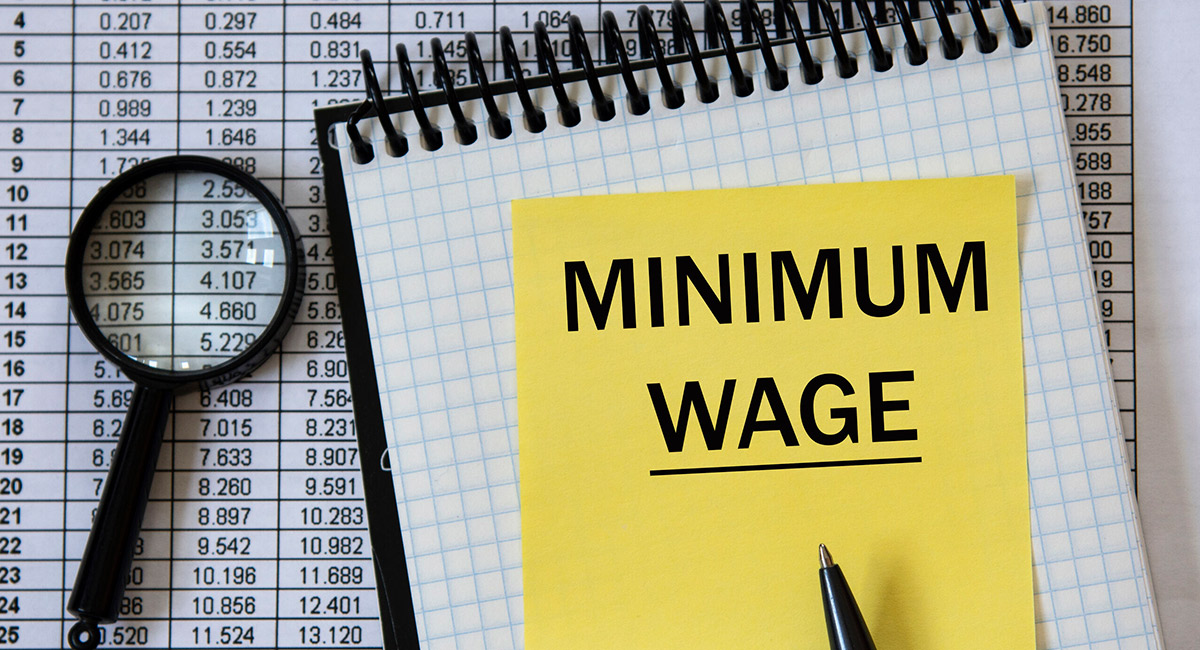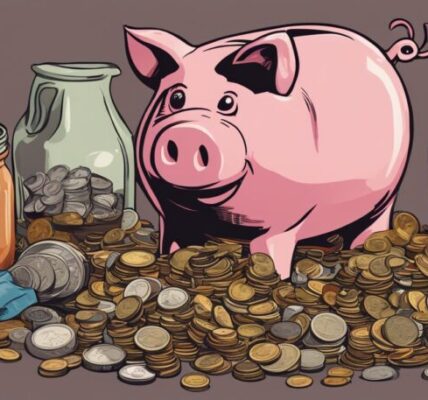Did you know that the federal minimum wage has been stuck at $7.25 an hour since 2009? It’s a shocking fact considering the rising cost of living and the increasing calls for a higher minimum wage. In recent years, the $15-an-hour minimum wage has gained significant attention, with proponents arguing that it would provide a livable wage for workers. But what does $15 an hour translate to in terms of annual salary? And is it enough to lift people out of poverty?
The $15-an-hour minimum wage proposal has sparked intense debates and discussions about its impact on workers, businesses, and poverty levels. Advocates argue that it would improve the financial well-being of low-wage workers and help lift them out of poverty. Critics, on the other hand, express concerns about its potential effects on employment levels and businesses’ ability to cope with higher labor costs.
In this article, we will explore the $15-an-hour minimum wage in detail, examining its potential impact on workers’ annual income, the regional variations in livable wages, the ongoing debate surrounding a livable wage, the relationship between the minimum wage and poverty levels, and the need for regular adjustments to the minimum wage to ensure it remains a livable wage over time. Join us as we delve into the complexities and implications of the $15 an hour annual salary guide and the livability factor.
Key Takeaways:
- Advocates argue that a $15-an-hour minimum wage would provide a livable wage for workers and lift them out of poverty.
- Critics express concerns about the potential impact of a $15 minimum wage on employment levels and businesses’ ability to cope with higher labor costs.
- The livable wage can vary significantly from state to state and within different regions of a state, based on factors such as the cost of living and housing expenses.
- While wages play a significant role in poverty levels, other factors like housing costs and healthcare expenses also impact a household’s financial well-being.
- Regular adjustments to the minimum wage are necessary to ensure it remains a livable wage that can keep pace with inflation and economic conditions.
The Impact of $15 an Hour Minimum Wage

If the minimum wage were raised to $15 per hour, it would have a significant impact on workers’ annual income. Using a standard full-time work schedule of 2,080 hours per year, someone earning $15 an hour would make $31,200 annually. This is a considerable increase from the current federal minimum wage of $7.25, which would result in an annual income of only $15,080. Raising the minimum wage would greatly improve the financial well-being of low-wage workers and potentially lift them out of poverty. However, there are concerns about the potential impact on businesses and employment levels, with some arguing that higher wages could lead to job losses.
| Minimum Wage | Annual Income (based on 2,080 hours) |
|---|---|
| $7.25 | $15,080 |
| $15 | $31,200 |
The increase from a $7.25 minimum wage to $15 an hour would more than double the annual income for workers. This additional income can have a significant impact on their ability to meet their basic needs, afford healthcare, and provide for their families. However, opponents of a higher minimum wage express concerns about the potential repercussions for businesses and employment. They argue that higher labor costs could lead to job cuts and reduced opportunities for employment.
Despite the concerns, raising the minimum wage to $15 an hour has gained support from advocates who argue that it is necessary to ensure fair wages and reduce poverty levels. It is important to consider the potential benefits and drawbacks of such a policy change, taking into account the specific economic context and dynamics of different industries and regions.
Hourly Pay to Yearly Salary Calculator
An hourly pay to yearly salary calculator is a valuable tool for both employees and employers. It allows individuals to quickly determine their annual income based on their hourly wage and the number of hours they work per year. This information can help individuals plan their finances, set financial goals, and make informed decisions about their employment and career choices.
For employers, an hourly pay to yearly salary calculator can assist with budgeting and payroll management. It enables businesses to accurately estimate labor costs and ensure fair compensation for their employees. By understanding the potential financial impact of different hourly wages on annual salaries, employers can make informed decisions about wage structures and remain competitive in the market.
The Regional Variations in Livable Wage
The livable wage can vary significantly from state to state and even within different regions of a state. Factors such as the cost of living, housing expenses, healthcare costs, and other essential expenses play a role in determining the livable wage.
For example, the District of Columbia has the highest livable wage of $23.13 per hour, while South Dakota has the lowest livable wage of $14.85 per hour. Higher livable wages are generally found in states with higher costs of living, such as California and New York.
It is important to consider these regional variations when assessing whether $15 an hour is a decent wage in a specific location.
Regional Variations in Livable Wage
| State | Livable Wage |
|---|---|
| California | $18.58 |
| New York | $17.77 |
| Texas | $15.80 |
| Florida | $15.42 |
| Ohio | $14.59 |

As shown in the table, states like California and New York have higher livable wages compared to states like Texas and Florida. These differences reflect the varying costs of living and the expenses associated with different regions.
Therefore, when considering whether $15 per hour is a decent wage, it is essential to analyze the specific location’s livable wage and the corresponding cost of living.
The Debate Over a Livable Wage
The concept of a livable wage is the subject of much debate. Supporters argue that a livable wage is necessary to ensure that workers can afford their basic needs and maintain a decent standard of living. They believe that no one working a full-time job should live in poverty. On the other hand, opponents of a higher minimum wage argue that it could lead to job losses, particularly in industries that rely heavily on low-wage workers. They believe that market forces should determine wages and that businesses should have the freedom to set their own pay rates. The debate over a livable wage raises important questions about income inequality, economic fairness, and the role of government in supporting workers.
| Supporters’ Arguments | Opponents’ Arguments |
|---|---|
| Workers deserve a wage that allows them to meet their basic needs and not live in poverty. | Higher wages could result in job losses, especially in industries with low profit margins. |
| A livable wage promotes economic fairness and reduces income inequality. | Market forces should dictate wages, and businesses should have the freedom to set their own pay rates. |
| Government has a responsibility to ensure a decent standard of living for all workers. | Higher labor costs could lead to increased prices for consumers. |
The debate surrounding a livable wage is complex, involving competing interests and different perspectives. It is an issue that affects not only workers but also businesses, consumers, and the overall economy. Striking a balance between ensuring fair wages and maintaining a healthy business environment is crucial. Regardless of one’s stance, it is evident that the discussion surrounding a livable wage is important for addressing income inequality and improving the financial well-being of workers.
Addressing Income Inequality
The debate over a livable wage is closely tied to the issue of income inequality. Proponents argue that raising the minimum wage can help bridge the gap between low-wage workers and those in higher income brackets, promoting a more equitable society. They emphasize the importance of providing workers with a wage that allows them to meet their basic needs and improve their quality of life. Meanwhile, opponents argue that income inequality is a natural outcome of market dynamics and that government intervention in the form of a higher minimum wage could have unintended consequences, such as job losses and reduced economic growth.
“A livable wage is not just a matter of fairness; it is an investment in our society’s well-being and future prosperity.” – Jane Wilson, Labor Advocate
The quote highlights the perspective of labor advocates who believe that a livable wage is not only a moral imperative but also an investment in the overall well-being and future prosperity of society. It suggests that a livable wage can lead to increased consumer spending, improved worker productivity, and reduced reliance on public assistance programs, ultimately benefiting the economy as a whole.
While the debate over a livable wage is ongoing, it is essential to consider the various arguments and their potential implications. The decision to implement or adjust the minimum wage requires a careful examination of economic factors, social considerations, and the specific context of different industries and regions.
You can also read: Yearly Interest on 20 Million Dollars
The Impact of Minimum Wage on Poverty
One of the key arguments for raising the minimum wage is the potential impact on poverty levels. Proponents argue that a higher minimum wage can lift people out of poverty and reduce income inequality. According to the Congressional Budget Office, increasing the minimum wage to $15 per hour by 2025 would lift 900,000 people out of poverty. However, opponents contend that higher wages could lead to job losses and ultimately exacerbate poverty if businesses are unable to afford higher labor costs. It is important to consider both sides of the debate when assessing the impact of the minimum wage on poverty.
While increasing the minimum wage can have a positive effect on poverty levels by providing workers with a higher income, there are concerns about the potential repercussions. Critics argue that higher labor costs could cause businesses to cut jobs or reduce hours to compensate for the increased wages. This could result in job losses, especially in industries that heavily rely on low-wage workers.
However, supporters of a higher minimum wage argue that the benefits outweigh the potential drawbacks. They believe that paying workers a livable wage is essential for reducing poverty and improving quality of life. By providing individuals with a higher income, they have more financial security and the opportunity to meet their basic needs without relying on government assistance.
To fully understand the impact of the minimum wage on poverty, it is crucial to consider other factors such as regional variations in the cost of living and the overall economic landscape. While a higher minimum wage may be sufficient to lift some individuals out of poverty in certain areas, it may not be enough in areas with a high cost of living.
Regional Variations in Poverty and Minimum Wage
The cost of living varies widely across different regions and states, meaning that the impact of a higher minimum wage on poverty levels will also differ. For example, a $15 per hour minimum wage may be sufficient to cover the cost of living in some areas, but in higher-cost regions, it may not be enough to keep individuals above the poverty line. Local factors such as housing costs, healthcare expenses, and transportation costs also contribute to the overall equation of poverty and wage sufficiency.
| State | Minimum Wage |
|---|---|
| California | $14.00 |
| Texas | $7.25 |
| New York | $12.50 |
| Florida | $10.00 |
As seen in the table above, there is substantial variation in minimum wage rates across different states. This variation reflects the cost of living and economic conditions in each state, as well as the local policies and regulations in place. It is important to consider these regional differences in wage levels and living expenses when evaluating the impact of the minimum wage on poverty.
In conclusion, the impact of the minimum wage on poverty is a complex issue with valid arguments on both sides of the debate. While a higher minimum wage has the potential to lift individuals out of poverty, there are concerns about the potential consequences for businesses and employment levels. Additionally, regional variations in living expenses must be taken into account to determine whether a higher minimum wage is sufficient to address poverty in specific areas. By considering multiple factors and perspectives, policymakers can make informed decisions to promote both economic growth and poverty reduction.
The Factors Beyond Wages in Poverty

While wages play a significant role in determining poverty levels, there are other factors that contribute to someone’s financial well-being. Housing costs, healthcare expenses, childcare, and other essential needs can greatly impact a household’s ability to escape poverty, regardless of their income level. For example, a family earning minimum wage may struggle to afford basic necessities if they face high housing costs or childcare expenses. It is important to consider these additional factors when assessing the livability of a wage and addressing poverty more comprehensively.
The Impact of Additional Factors on Livability
When analyzing the question of livability, it is crucial to take into account the various elements that influence an individual or family’s financial situation. Wages alone do not paint a complete picture of a household’s ability to meet their basic needs and thrive economically. Let’s examine some of these additional factors:
- Housing Costs: The cost of housing varies across different regions, with some areas experiencing higher prices than others. Individuals or families residing in regions with exorbitant housing costs may face significant financial burdens, even if their wages are comparatively high. High rents or mortgage payments can consume a significant portion of one’s income, making it difficult to afford other essential expenses.
- Healthcare Expenses: Medical costs, including insurance premiums, deductibles, co-pays, and unexpected emergencies, can pose a considerable financial strain on individuals and families. Rising healthcare expenses can significantly reduce the amount of disposable income available for other necessities.
- Childcare: The cost of childcare can be prohibitive for many families, particularly those with young children. The need for quality childcare services to enable parents to work can place a tremendous financial burden on households, limiting their ability to save or invest in other areas of their lives.
Considering these factors alongside wages paints a more comprehensive picture of a household’s financial reality and their ability to escape poverty. The interplay of income, expenses, and regional cost disparities highlights the need for a holistic approach to addressing poverty in society.
“It is not enough to focus solely on increasing wages to combat poverty. We must also address the structural barriers and economic disparities that contribute to financial hardships.”
The Reality of Financial Struggles
For many low-income individuals and families, the combination of low wages and high costs make it difficult to achieve financial security. The inability to afford basic necessities can lead to a cycle of poverty that is challenging to break. While increasing wages can provide immediate relief, it is essential to address the underlying issues that perpetuate poverty:
- Income Inequality: Income disparities and wealth concentration contribute to socioeconomic inequality, trapping many individuals and families in poverty. Addressing income inequality requires systemic changes that promote upward mobility and provide equal opportunities for all.
- Access to Quality Education: Education is a crucial factor in escaping poverty. Providing affordable, high-quality education from early childhood through higher education can help break the cycle of poverty and create opportunities for economic advancement.
- Supportive Social Safety Nets: Robust social safety nets, including affordable healthcare, housing assistance, and childcare support, can help alleviate the burden on low-income individuals and families. Investing in these social programs is crucial for promoting financial stability and reducing poverty rates.
The path to combating poverty requires a multi-faceted approach that considers not only wages but also the broader social and economic factors that perpetuate financial struggles. By addressing these factors comprehensively, society can work towards creating a more equitable and just system that uplifts all individuals and allows them to thrive.
Comparison of Factors Beyond Wages
The table above provides a comparison of various factors beyond wages that contribute to poverty levels. It highlights the interplay between income, housing costs, healthcare expenses, and childcare, showcasing how these factors intricately shape the financial well-being of individuals and families.
The Need for Regular Adjustments to the Minimum Wage

The federal minimum wage has not been adjusted for over a decade, resulting in a significant erosion of its purchasing power. This has made it increasingly challenging for low-wage workers to meet their basic needs and maintain a decent standard of living. The impact of inflation and rising costs of living cannot be ignored, as they directly affect the financial well-being of individuals who rely on minimum wage employment.
In order to ensure that the minimum wage remains a livable wage, it is crucial for it to be regularly adjusted to keep pace with inflation and changing economic conditions. This adjustment would help workers maintain a reasonable and sustainable standard of living, providing them with the means to support themselves and their families without falling into poverty.
Regular adjustments to the minimum wage would not only address the issue of wage stagnation but also contribute to reducing income inequality by providing fair compensation for the work being performed. It would also promote economic stability by improving the financial security of low-wage workers, which in turn can stimulate consumer spending and boost local economies.
The need for regular adjustments to the minimum wage is supported by the fact that the cost of living continues to rise, while the purchasing power of the minimum wage remains stagnant. Failure to adjust the minimum wage in line with inflation can lead to a widening gap between wages and living expenses, exacerbating the financial hardships faced by low-wage workers.
Regular adjustments must be made with careful consideration of various factors, including the rate of inflation, local economic conditions, and the impact on businesses. By implementing a systematic approach to adjusting the minimum wage, policymakers can strike a balance between supporting workers and ensuring the sustainability and growth of businesses.
The importance of regular adjustments to the minimum wage cannot be overstated. By keeping the minimum wage aligned with the changing economic landscape, policymakers can uphold the principle of fairness and provide workers with a livable wage that reflects their contributions to society. This approach is crucial for building an inclusive and equitable economy where all individuals have the opportunity to thrive.
Conclusion

The ongoing debate surrounding the implementation of a $15 minimum wage revolves around its potential impact on livability and poverty levels. While increasing the minimum wage to $15 an hour has the potential to uplift numerous workers out of poverty and enhance their financial well-being, concerns linger regarding the repercussions it may have on businesses and employment levels. It is of utmost importance to consider regional disparities in the cost of living when assessing whether $15 an hour constitutes a decent wage in a specific location. Moreover, effectively addressing poverty necessitates a comprehensive approach that factors in variables beyond wages, including housing costs and healthcare expenses. Regular adjustments to the minimum wage are also vital to ensure its continued efficacy as a livable wage over time.
When contemplating the impact of a $15 minimum wage, it is essential to utilize tools such as the Hourly Pay to Yearly Salary Calculator and the Hourly Wage to Yearly Earnings Converter. These resources enable individuals and policymakers to evaluate the potential economic implications of various wage levels on an annual basis. By considering these figures alongside other factors, a more informed decision can be made regarding the appropriate minimum wage that balances the needs of workers and businesses alike.
The issue of a livable wage encompasses a multitude of perspectives, each advocating for different solutions. While proponents argue that a minimum wage should ensure basic needs are met and guarantee a decent standard of living for full-time workers, opponents contend that market forces should dictate wage rates, emphasizing businesses’ autonomy in setting pay scales. This debate highlights the broader questions surrounding income inequality, economic fairness, and the role of the government in supporting working individuals and families.
To effectively combat poverty, it is crucial to take a holistic approach that recognizes the interplay between wages and other socio-economic factors. While wages play a substantial role, they alone cannot overcome the hurdles faced by low-income households. Expense considerations such as housing costs, healthcare expenses, childcare, and other essential needs are critical when formulating comprehensive poverty-alleviation strategies. By addressing these areas collectively, policymakers can create a more equitable society that supports individuals in their journey to self-sufficiency.
FAQ
How much is an hour a year?
A person earning an hour would make ,200 annually based on a standard full-time work schedule of 2,080 hours per year.
Is an hour a good salary?
Whether an hour is considered a good salary depends on various factors such as the cost of living, housing expenses, and other essential expenses in a specific location. It is important to consider these factors when assessing the livability of a wage.
How do you convert hourly pay to yearly salary?
To convert hourly pay to yearly salary, multiply the hourly rate by the number of hours worked in a year (usually 2,080 hours).
How does an hourly rate compare to an annual pay?
An hourly rate multiplied by the number of hours worked in a year will give you the annual pay. Comparing hourly rates to annual pay can help determine the overall earnings and potential financial stability.
Is per hour a decent wage?
The decency of a per hour wage depends on many factors such as the cost of living, housing expenses, healthcare costs, and other essential expenses specific to a location. It may be considered a decent wage in some areas, while in others, it may not be sufficient to cover the basic needs.
Is there a way to convert hourly wage to yearly earnings?
Yes, hourly wage can be converted to yearly earnings by multiplying the hourly rate by the number of hours worked in a year (usually 2,080 hours).
How does the hourly wage compare to the annual salary?
The hourly wage multiplied by the number of hours worked in a year provides the annual salary. Comparing the hourly wage to the annual salary can give you a clearer picture of the overall earnings and financial stability.
How much is the livable wage by state?
The livable wage can vary significantly from state to state. Factors such as the cost of living, housing expenses, healthcare costs, and other essential expenses contribute to variations in the livable wage. The District of Columbia has the highest livable wage of .13 per hour, while South Dakota has the lowest livable wage of .85 per hour.
What is the debate over a livable wage?
The debate over a livable wage centers around the necessity of ensuring that workers can afford their basic needs and maintain a decent standard of living. Supporters argue that no one working a full-time job should live in poverty, while opponents believe that market forces should determine wages and that businesses should be free to set their own pay rates.
What is the impact of raising the minimum wage on poverty levels?
Raising the minimum wage to per hour by 2025 has the potential to lift 900,000 people out of poverty, according to estimations from the Congressional Budget Office. However, there are concerns that higher wages could lead to job losses and potentially exacerbate poverty if businesses are unable to afford increased labor costs.
What factors contribute to poverty apart from wages?
While wages play a significant role in determining poverty levels, there are other factors that contribute to someone’s financial well-being. Housing costs, healthcare expenses, childcare, and other essential needs can greatly impact a household’s ability to escape poverty, regardless of their income level.
Why is it important to regularly adjust the minimum wage?
The purchasing power of the minimum wage erodes over time due to inflation and rising costs of living. It is crucial to regularly adjust the minimum wage to ensure that it remains a livable wage, helping workers maintain a decent standard of living and avoid falling into poverty.




